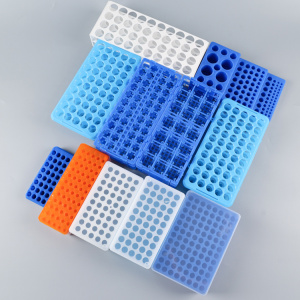How to choose the ELISA Plates you need to know!
Now everyone sees that most of the ELISA plates can be disassembled, that is, a single strip can be disassembled, and there are also fixed plates. ELISA Strip Well Plates can actually save a lot of money, because then when you want to use a new ELISA plate, you can remove the ELISA strip and buy some ELISA strips, just consider To match the same model can be. In addition, the detachable ELISA plate can be used for in vitro detection, which is easy to disassemble.
The selection of the ELISA plate depends on its ability to bind proteins and other molecules:
1. High binding force
After the surface is treated, its protein binding ability is greatly enhanced, reaching 300-400ngIgG/cm2, and the molecular weight of the main binding protein is more than 10kD. The use of this type of ELISA plate can improve the sensitivity, and can relatively reduce the concentration and dosage of the coated protein, but the disadvantage is that it is easy to produce non-specific reactions. After antigen or antibody coating, non-ionic detergents cannot effectively block unbound protein sites, so protein should be used as a blocking agent.
2. Medium Cohesion
Passively combined with proteins via surface hydrophobic bonds, it is suitable as a solid phase carrier for macromolecular proteins with a molecular weight >20kD, and its protein binding capacity is 200-300ng IgG/cm2. Due to the fact that this type of ELISA plate only binds to macromolecules, it is suitable for use as a solid-phase carrier for unpurified antibodies or antigens, which can reduce potential non-specific cross-reactions. These plates can be blocked with inert proteins or non-ionic detergents.
3. Amination
After surface modification, it possesses positively charged amino groups whose hydrophobic bonds are replaced by hydrophilic bonds. This type of ELISA plate is suitable as a solid-phase carrier for small molecular proteins. Using the appropriate buffer and pH, its surface can bind negatively charged small molecules via ionic bonds. Due to the hydrophilic nature of its surface and its ability to be covalently bound by other cross-linking agents, it can be used to immobilize protein molecules that are soluble in detergents. The disadvantage of this type of plate is that some protein molecules cannot bind due to the reduced hydrophobicity; in addition, its surface needs to be effectively blocked. Due to the hydrophilic and covalent surface properties, the blocking solution used must be able to interact with non-reactive amino groups and any functional groups in the chosen crosslinker.




